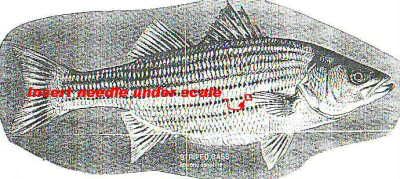jtexas
Fleet Admiral
- Joined
- Oct 13, 2003
- Messages
- 8,646
Here's a couple articles I came across today, just thought I'd share. <br /><br />The recommendation for deep-hooked fish here is cut the line, here's another method I read about on iboats but haven't tried myself.<br /><br />from www.sixoldgeezers.com<br /> <br />
 <br /><br /><br />Information provided by the Oklahoma Department of Wildlife Conservation, Southcentral Region.
<br /><br /><br />Information provided by the Oklahoma Department of Wildlife Conservation, Southcentral Region.
<br />Steps to Reduce Striped Bass Hooking Mortality From Fish Caught in Deep Water <br /><br />Fish as shallow as possible: If fish are in 60 feet water try catching them at 30 feet rather than at a depth of 50 feet, this helps reduce the bends. <br /><br />When bait fishing, use circle-type hooks, designed for hooking fish in the mouth: One that has been successful is the Mustad "Croker Hook" size 1/0 to 2/0. <br /><br />Release fish along side of boat to reduce handling stress. Be sure to wet hands and towels before grabbing the fish. Boga grips are good tools for holding fish while removing hooks. <br /><br />Cut line and gently release deep hooked fish. <br /><br />When a limit of big fish (2 fish 20" or longer in length) are caught, move and find a school of smaller box fish rather than staying and releasing fish tat want to float. Try to leave space in your limit for a fish or two that can't be revived. <br /><br />As a last resort, fizz floating striped bass by using a #18 -1 ½ " or 2" hypodermic needle. See diagram and explanation. Hold fish in water along side of boat and let air bubble out till bubbles stop and fish swims away. <br /><br />Prepared by Paul Mauck <br />
<br />Fizzing Striped Bass <br /><br />Striped bass, like most fishes, adjust their buoyancy so they can maintain their vertical position in the water without actively swimming. <br />Stripers adjust their buoyancy by the gas bladder. The gas bladder in fish operates like a buoyancy-compensating device used by a SCUBA diver. As depth increases, pressure increases and the gas compresses (occupies less volume). <br /><br />To maintain neutral buoyancy, the fish adds gas to the gas bladder. When the fish ascends, pressure decreases, the volume of gas in the bladder expands, and buoyancy increases. <br /><br />Stripers can remove gas from the bladder with the gas gland, but this is a relatively slow process. Therefore, a striper quickly displaced from deep water to shallow water is helplessly buoyant and suffers "the bends". <br /><br />Behavioral symptoms of stripers with buoyancy probloms include fish that remain at the surface after release and fish that lie on their side or <br />assume a "head-down" posture. These fish can be depressurized by using an 18-gauge needle at 1 ½ to 2 inches in length. <br /><br />Insert the hypodermic needle under a scale, through the skin, and into the body cavity to puncture the gas bladder. The location of insertion is important, because sticking a vital organ, such as the closely located kidney, can kill the fish. To locate the point of insertion, insert the needle where the tip of the pectoral fin touches the 2nd stripe below the lateral line (see diagram). <br />




















